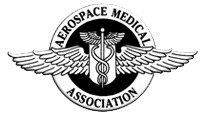| Pilot Medical Solutions has helped thousands of pilots with color vision issues. Due to recent changes in FAA policy, the FAA has not accepted tests validated only by the pilot or Aviation Medical Examiner (AME). Pilot Medical Solutions helps pilots train to take the latest tests accepted by the feds. This training that can help pilots pass an acceptable color vision test.
Over the years color vision tests have been added and removed from the FAA accepted list. In 2002, the crash of Federal Express Flight 1478 – Boeing 727-232 (N497FE) – in Tallahassee, Florida was investigated by the NTSB. The report (HERE) found that color vision was a factor in the crash and provided recommendations to the FAA concerning color vision testing. Those and other recommendations have resulted in a substantial change in color vision testing which could affect the flying privileges’ of many pilots. As of January 1st, 2025 there are only three FAA accepted tests:
There are several caveats and pitfalls to this new FAA policy. The color vision screening tests above are the only FAA accepted tests. Many AME’s have not purchased the right to administer the new tests. This means that any pilot testing for the first time must find another location which offers the test. Pilots who have successfully passed a previously FAA accepted test may not require further testing. However, in some cases, the FAA may require previously approved pilots to re-test. Color vision can get worse as we get older, especially if there are cataracts (cloudy areas in the lens of the eye). Other things which may effect color vision and compel the FAA to request color vision retesting are:
Download the latest FAA color vision protocol / flow chart Contact Pilot Medical Solutions to find out how to prepare, and hopefully avoid, temporary or permanent FAA medical certification restrictions. If you already have a restriction, Pilot Medical Solutions may be able to help you remove the restriction and obtain unrestricted FAA medical certification. Take a Color Vision Test Online Contact Pilot Medical Solutions – Get help today MORE INFORMATION ON COLOR VISION What is color blindness? A person with normal trichromatic (three colors) vision can identify over 7 million different colors! However, 8% (1 in 12) of the men and 0.5% (1 in 200) of the women in North America have fewer cones than normal and are said to have a color vision deficiency. Because the overwhelming majority of these people can distinguish colors to some extent, it is inaccurate to label them as color “blind.” Red-green deficiency is the most common color vision abnormality. The mildest forms of this deficiency are protanomaly—where blue-green and red-purple are perceived as an indistinct grayish shade—and deuteranomaly—where green and red-purple are perceived as an indistinct grayish shade. Both of these defects are forms of anomalous trichromatism, which means that blue, green, and red cones are present, but the pigments contained within them are altered. Half of the people with anomalous trichromatism can make precise color matches (but not as precisely as those with normal color vision) and are said to have a simple anomaly, while the other half cannot and are said to have an extreme anomaly. A more pronounced form of red-green deficiency is called dichromatism (two colors), in which one of the three cone types is absent. Dichromatism is divided into two subtypes, protanopia—where blue-green and red-purple are perceived as gray—and deuteranopia—where green and red-purple are perceived as gray. The rarest form of color deficiency is monochromatism (one color), which is divided into rod and cone subtypes. A person with cone monochromatism has good central vision but confuses all colors, because two of the three cone types are missing. A person with rod monochromatism, or achromatopsia (no color), has no cones at all and sees everything in shades of gray. People with achromatopsia have poor vision and difficulty adjusting to bright light, so it’s fortunate that this abnormality affects only 1 person in 33,000 in the United States. Although color vision deficiencies can be caused by eye diseases or normal aging, the majority are inherited as a gene attached to the X chromosome. This explains why men, who have only one X chromosome, are far more susceptible to color vision abnormalities than women, who have two. An affected man passes the color-deficiency gene to all of his daughters, who then become unaffected carriers; his sons get his Y chromosome and have normal color vision. Each son of a carrier female then has a 50-50 chance of getting the gene from his mother. Therefore, the typical scenario is a man inheriting the color-deficiency gene from his maternal grandfather. For a woman to be color deficient, she would have to have an affected father and mother who was at least a carrier; even then, her odds of getting the gene would be only 50-50. How does this affect me as a pilot? How can I find out if I have a color vision deficiency? If you already have a color vision restriction Pilot Medical Solutions can often help you remove this from your medical certificate? Pilot Medical Solutions has helped many pilots with this delicate FAA medical process. Contact us to find out how we can help you and prevent permanent restrictions.
|
|
Help with this condition | FAA Medical Standards | Color Vision Test |




